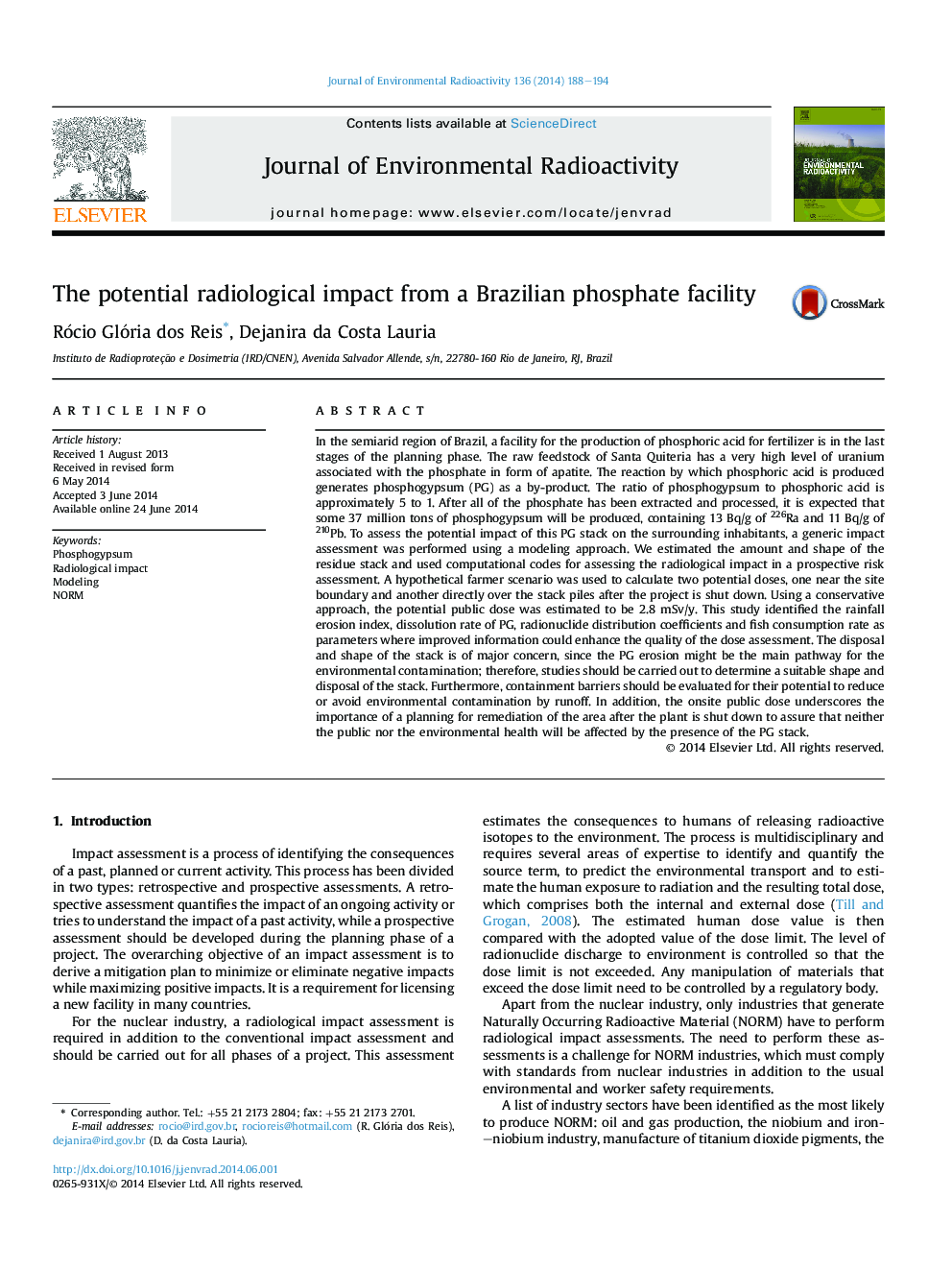| Article ID | Journal | Published Year | Pages | File Type |
|---|---|---|---|---|
| 8083092 | Journal of Environmental Radioactivity | 2014 | 7 Pages |
Abstract
In the semiarid region of Brazil, a facility for the production of phosphoric acid for fertilizer is in the last stages of the planning phase. The raw feedstock of Santa Quiteria has a very high level of uranium associated with the phosphate in form of apatite. The reaction by which phosphoric acid is produced generates phosphogypsum (PG) as a by-product. The ratio of phosphogypsum to phosphoric acid is approximately 5 to 1. After all of the phosphate has been extracted and processed, it is expected that some 37 million tons of phosphogypsum will be produced, containing 13Â Bq/g of 226Ra and 11Â Bq/g of 210Pb. To assess the potential impact of this PG stack on the surrounding inhabitants, a generic impact assessment was performed using a modeling approach. We estimated the amount and shape of the residue stack and used computational codes for assessing the radiological impact in a prospective risk assessment. A hypothetical farmer scenario was used to calculate two potential doses, one near the site boundary and another directly over the stack piles after the project is shut down. Using a conservative approach, the potential public dose was estimated to be 2.8Â mSv/y. This study identified the rainfall erosion index, dissolution rate of PG, radionuclide distribution coefficients and fish consumption rate as parameters where improved information could enhance the quality of the dose assessment. The disposal and shape of the stack is of major concern, since the PG erosion might be the main pathway for the environmental contamination; therefore, studies should be carried out to determine a suitable shape and disposal of the stack. Furthermore, containment barriers should be evaluated for their potential to reduce or avoid environmental contamination by runoff. In addition, the onsite public dose underscores the importance of a planning for remediation of the area after the plant is shut down to assure that neither the public nor the environmental health will be affected by the presence of the PG stack.
Related Topics
Physical Sciences and Engineering
Energy
Nuclear Energy and Engineering
Authors
Rócio Glória dos Reis, Dejanira da Costa Lauria,
